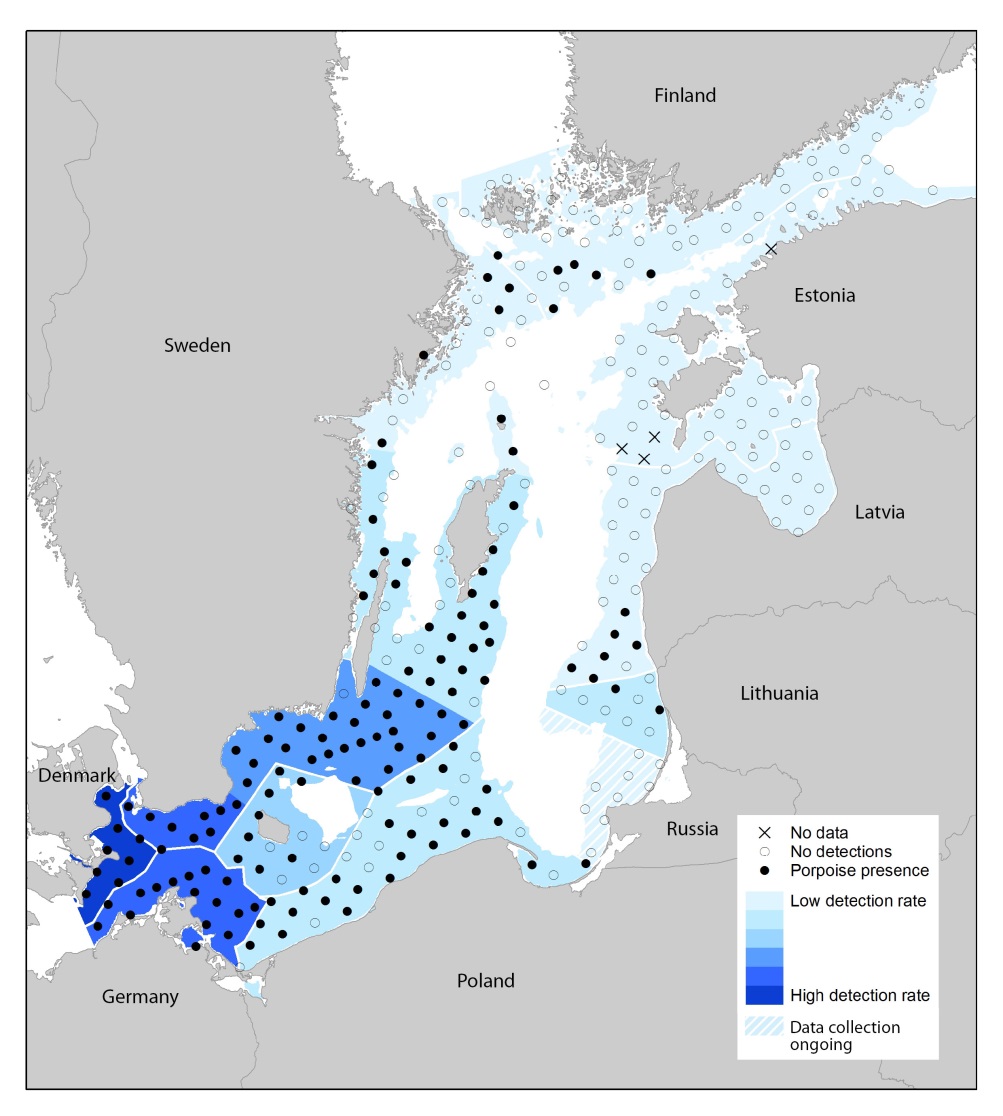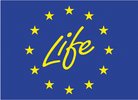Masser af livstegn fra marsvin i Østersøen
Der lever marsvin i store dele af hele Østersøen og især i den danske del af Østersøen, også ved Bornholm, er den lille hvalart godt repræsenteret.

Marsvinet har status som kritisk truet art i havområdet, men nu leverer et flerårigt, internationalt forskningsprojekt de overraskende positive data.
SAMBAH-forskningsprojektet, hvor også Aarhus Universitet deltager, har som det første i verden udviklet en metode til at optælle dyrene ved hjælp af lydene, de udsender, når de skal fange fisk, finde vej og kommunikere indbyrdes. Siden maj 2011 har 304 passive akustiske marsvin-optagere, såkaldte C-PODs, udlagt med ca. 25 kilometers afstand optaget lyde fra marsvin.
Forskerne har nu med succes indsamlet data fra hele Østersøen, og marsvin er hørt over det meste af havområdet med få marsvin i Ålandshavet mellem Finland og Sverige, men et større antal ud for det sydlige Sverige, ved Bornholm, i den vestlige danske del af Østersøen og ud for Tyskland. Også ud for Letland, Litauen og Polen har dyrene givet lyd fra sig.
Seniorforsker Jonas Teilmann, DCE - Nationalt Center for Miljø og Energi, Aarhus Universitet, der leder den danske del af projektet, fortæller, at forskerne nu går i gang med en større analyse af de indsamlede data.
”Analysen vil i løbet af i år kunne fortælle os om både antallet af marsvin og størrelsen af de enkelte bestande i de forskellige områder af Østersøen,” siger Jonas Teilmann.
Kontakt: Seniorforsker Jonas Teilmann, tlf. 8715 8494, jte@dmu.dk
DCE - Nationalt Center for Miljø og Energi
Institut for Bioscience, Aarhus Universitet
Læs pressemeddelelsen på engelsk fra SAMBAH-projektet, der er finansieret af EU’s LIFE-program for miljø og natur:
Here are the Baltic harbour porpoises!
Harbour porpoises are now clearly shown to be present in a large part of the Baltic Proper. This information is based on two years of logging harbour porpoise echolocation clicks, carried out by the SAMBAH project. The highest porpoise detection rates were found in the Danish waters to the Southwest. Moving towards the East, higher detection rates were found along the southern Swedish and German coasts than along the coasts of Poland.
The innovative EU LIFE+ project SAMBAH (Static Acoustic Monitoring of the Baltic Sea Harbour Porpoise) is now entering the analysis phase, after having quality controlled the gigantic passive acoustic monitoring (PAM) dataset, collected from May 2011 to April 2013. A complete map, showing in which of the 304 monitoring stations porpoise clicks have been detected, can now be presented. The detection rates, averaged for all stations in the different countries’ EEZ, or larger parts of the EEZ, are shown in shades of blue in the map. The information in this map is more than we have ever known before about the Baltic harbour porpoise distribution, and much more will come when the data have been analysed in depth.
New method
The Baltic harbour porpoise population is classified as critically endangered. However, because traditional survey methods from ships or airplanes produce insufficient data in this low-density population, this classification is based on very uncertain abundance estimates. Therefore the SAMBAH project employed a new method, using a large number of anchored porpoise click detectors, so called CPODs, which log the echolocation click sounds used by porpoises to navigate, find fish to eat and communicate.
SAMBAH is to this date the largest PAM project in the world. To cover the known historic distribution range of harbour porpoises in the Baltic Proper, the Sea of Åland, the Archipelago Sea and the Bay of Finland, as many as 304 CPODs were required. In an attempt to reveal seasonal variations, these CPODs have been kept in operation for two full years. This made the field work a logistically very challenging undertaking.
The first step in the analysis is to convert click detections into densities and total abundance of harbour porpoises in the study area, and to calculate the average abundance in each country. Even if harbour porpoises move over large areas and do not stay within country borders, the average national abundance is important information when the management authorities develop their national action plans. These are urgently needed to ensure the future existence of the harbour porpoise in the Baltic Sea.
The next step will be to use the population density data in so called spatial modelling, which will generate much more detailed distribution maps, showing seasonal variations and also clarifying the relationships between different environment factors and harbour porpoise distribution. Based on these maps, it will be possible to identify areas of importance for harbour porpoises, and areas with increased risk of conflict with human activities. This will also be very important input to the national action plans.
The density and abundance calculation will be completed during the spring and the result of the habitat modelling will be presented during the fall of 2014. SAMBAH’s end-of-project conference will be held at Kolmården Wildlife Park, Sweden, on December 8-9, 2014.

Foto: Solvin Zankl, SAMBAH
The Harbour porpoise, Phocoena phocoena
The harbour porpoise is one of the smallest toothed whales, with a body length of 1.5-1.9m and a body weight of 50-70kg (females grow larger than males). The head lacks a beak, the dorsal colour is dark, almost black, and the dorsal fin is small and triangular. Its surfacing behaviour is mostly inconspicuous, and the blow almost invisible. It feeds on herring, sprat, small cod and a variety of bottom dwelling fish, like sandeels and gobies. The species has a wide distribution in temperate waters in the northern hemisphere. In the Baltic region, there are three harbour porpoise populations; (1) in the Baltic Proper and North-Northeast thereof, (2) in the Belt Seas and Southern Kattegat and (3) in the Northern Kattegat, Skagerrak and the North Sea.



